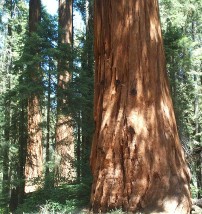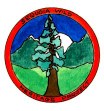Sequoia Wild Heritage Project
 Our mission is to add existing roadless areas of the Sequoia National Park, National Forest, and National Monument to the National Wilderness Preservation System.
Our mission is to add existing roadless areas of the Sequoia National Park, National Forest, and National Monument to the National Wilderness Preservation System.
Sequoia National Forest
Mediated Settlement Agreement
Supports Wilderness
Representatives of the timber industry and off-road vehicle groups often argue that the Sequoia National Forest Land Management Plan Mediated Settlement Agreement (MSA), adopted in 1990, provides an adequate framework for forest protection.
Environmentalists think otherwise, as we believe that we need further safeguards, such as those provided in the 2000 Giant Sequoia National Monument designation, and additional protections for wildlife, clean water, and outdoor recreation contained in the Sierra Nevada Framework and the original Clinton Administration Roadless Conservation Rule. And in fact, only Wilderness designation by Congress will permanently protect these areas!
In any case, the industry groups signed off on the neduated settlement agreement, along with most environmental groups, federal agencies, and the state of California.
Let us not forget that the MSA actually supports wilderness designation, either expressly or through management recommendations.
Here's what the MSA says about the various Roadless Areas that citizens are recommending now for wilderness designation:
"Agnew Roadless Area west of Lightning Creek will be classified as unregulated. No road building or logging will occur. The area will be managed for giant sequoias, watershed, wildlife, and roadless recreation."
"Moses Roadless Area. The Regional Forester shall recommend that the mapped portions of the Moses roadless Area (see Exibit K) be included in the Wilderness System as provided under the Wilderness Act of 1964. Pending final disposition by the executive and/or legislative branches, the mapped portions of the Moses Roadless Area shal be removed from the available timber land base and the ara will be managed to preserve its wilderness character."
"Slate Mountain Roadless Area will be divided into regulated and unregulated areas as shown on Exhibit J. Except for possible logging and road building incidental to the proposed development of the Peppermint Mounain Resort [a long-abandoned proposal], no commercial logging or timber harvest roads will be allowed in the unregulated area. Portions of the Section 30 will be managed to protect habitat of the Kern river Rainbow trout. The Coy drainage wil be managed to protect the Camp Nelson viewshed and, together with the rogers Camp saddle, to provide old growth habitat linkabe between Slate Mountain and Black Mountain. Logging of the regulated area will be limited to Reg. II sanitation, single tree selection by h elicopter, except that a portion will be limited to Reg. IIII management as shown on Exhibit J, with no roads or landings within the roadless area."
"Black Mountain roadless area will be classified as unregulated. No raod building or logging will occur. The Area wil be manged for giant sequoias, watershed, wildlife (deer mitigation corridor, old-growth species), roadless recreation, and sugar pine gene resources."
"Dennison Roadless Area will be classified as unregulated, It will retain its currente Plan designated as a Semi-Primitive-Noon-Motorized Area."
So, we see the MSA gives some strong protection for these roadless areas to maintain their wild character.
Wilderness designation under the Wilderness Act would ensure that these roadless values be preserved for perpetuity.
At the very least, no signatory of the MSA should be allowed to oppose wilderness designation for any of the above-listed areas, since they agreed to wilderness or at least roadless protection for them in the MSA. Signatories include the California Association of Four Wheel Drive Clubs, Sequoia Forest Industries, Sierra Forest Products (signed by Glen H. Duysen and their legal counsel).
For questions about this website or to volunteer to help out, please contact us at: info@sequoianet.org
